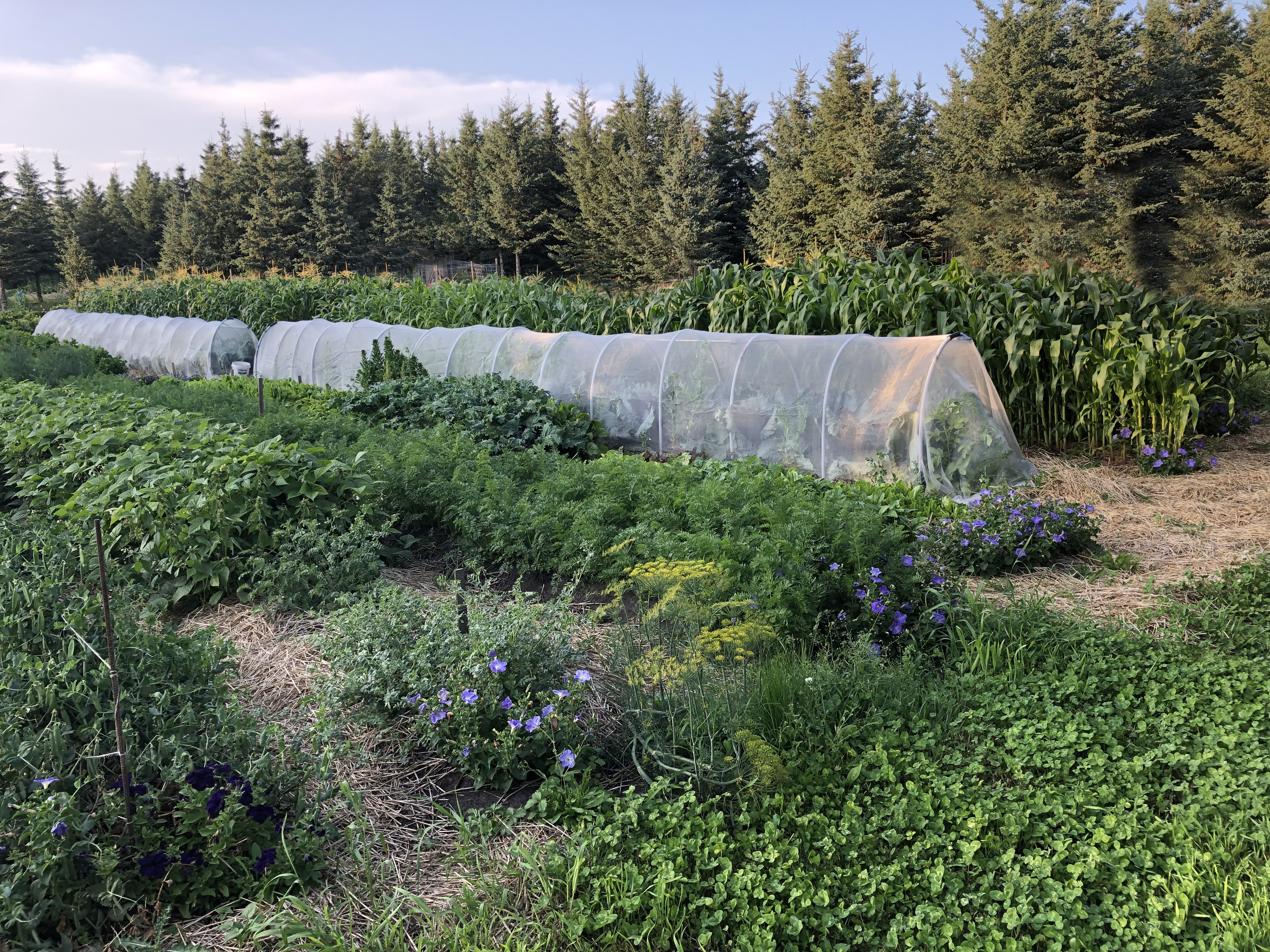
The first pillar of soil health
Soil armour is the first pillar in soil health.
There are five principles that work together to create healthy soil. When soil is healthy, it means our plants are healthy. Healthy plants are less likely to be infected by plant diseases or infested by insects. Healthy plants also mean increased yields in vegetable plants so prairie gardeners can reduce how much they grow to reap the same amount of harvest.
The five principles are: soil armour, minimize soil disturbance, plant diversity, continual live root/plant and livestock.
Click the additional articles below to learn more about the other four pillars.
What does soil armour or mulch do for your soil?
The first principle is soil armour. This means we simply cover our soil with mulch. It doesn’t matter if you are gardening in a container, a raised bed, a small square foot garden in an urban location, a large rural garden, an orchard or a landscaped flower bed, soil armour or cover will benefit in all types of gardens.
Stops Wind Erosion
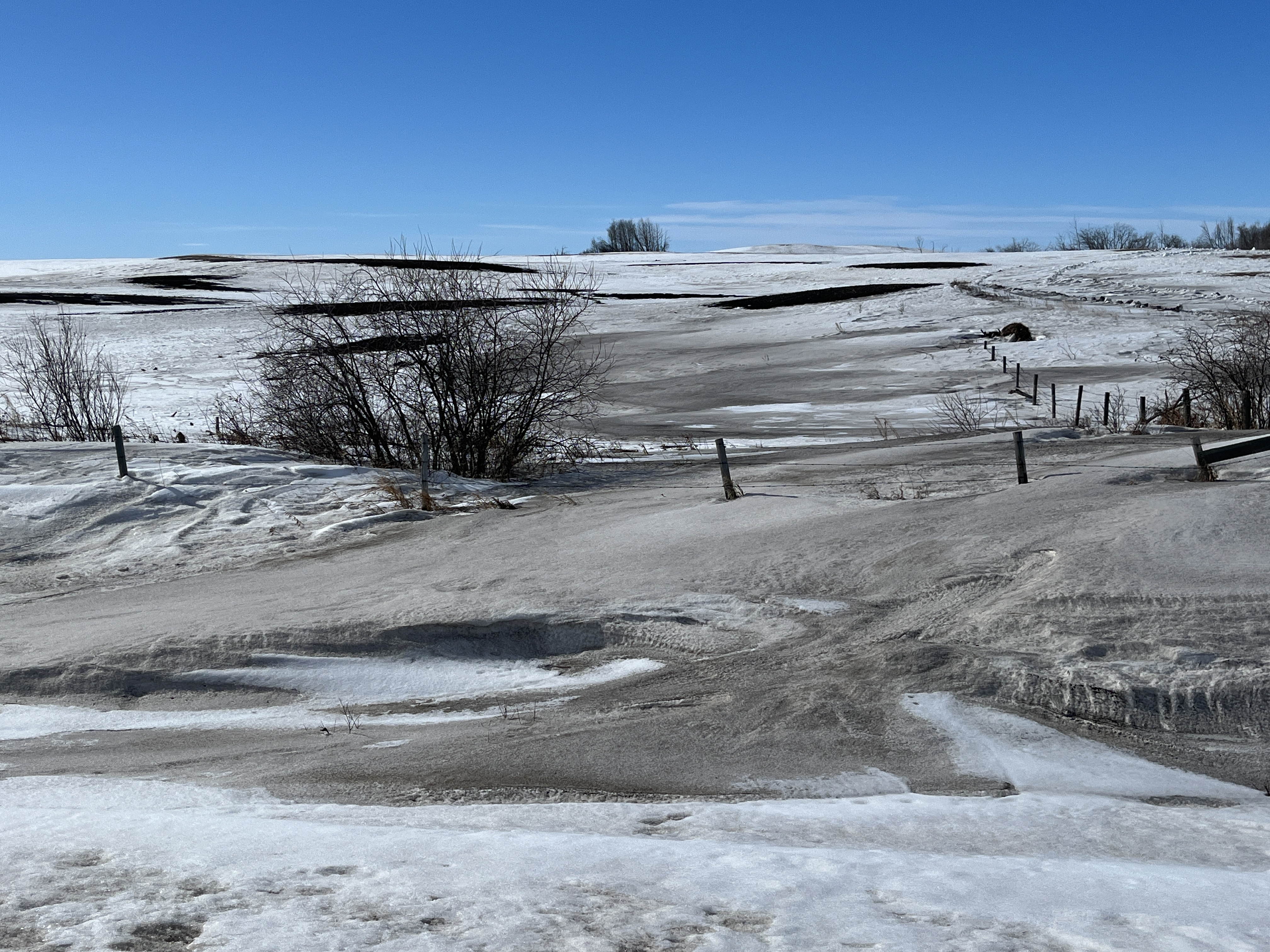
When bare soil is exposed to the wind, water will be quickly evaporated from the soil leaving it very light. The wind can then pick up the soil particles and move them. Over time, topsoil or the very upper layer of soil that contains rich nutrients that help support plant growth, will blow away into ditches. This removes a very key part of our garden’s ecosystem, the piece that supports plant growth.
By adding mulch, the wind can no longer blow the soil around. It stays put on our gardens where we need it to be.
Stops water erosion and soil crusting
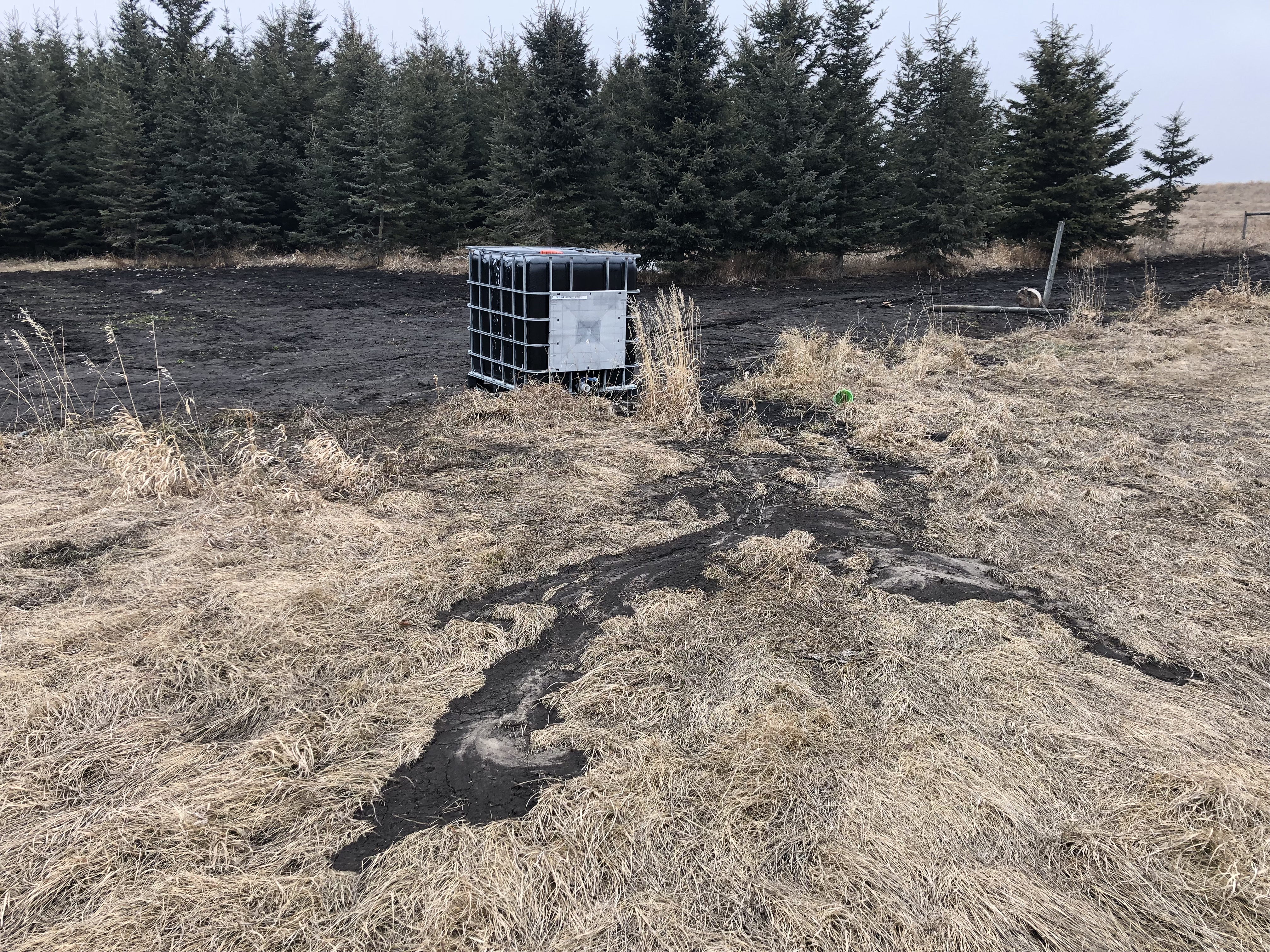
Climate change has affected how our rain falls on the prairies. Instead of coming in gentle rains over a period of days, changes in weather patterns creates instability in the atmosphere and our rain comes from violent storms. Torrential downpours, hail and high, damaging winds are far more prevalent now.
When rain falls softly on the soil, the soil pores can absorb the rain into the soil. When rain is very hard and fast, the rain drops cause the soil to splash or bounce up. This in turn causes the soil to break apart into smaller pieces that cover up the pores in the soil. This is how a hard crust on the soil forms as the smaller pieces dry faster in the winds and stick together. When the pores are covered, the water cannot be absorbed as easily into the soil.
When the rain is very hard, a lot of water in a short period of time, it will run over the top of the soil faster. Add in no pores in the soil to absorb the water and what happens is that the water runs over the soil and downhill, pooling in ditches or storm drains effectively removing rainwater from our garden’s ecosystem.
When mulch is added to soil, it absorbs the speed of the raindrop and slows it down. It also prevents the harder raindrops from directly hitting the soil so soil crusting does not happen. The mulch itself will also absorb and hold water. This together allows the water to slow down and be absorbed into the soil instead of running off the garden.
Reduces evaporation rates

As the sun hits the soil, the soil heats up and water is evaporated off. You can think of it like a pot of boiling water on the stove. If you put a lid on the pot, the water will boil but remain in the pot. If you leave the lid off, the pot will eventually boil dry as the water is evaporated off.
Our soil works in the same way. The warmer and drier it is, the faster the water will evaporate into the atmosphere. The harder the wind blows, the more the soil will dry out. Think about when you are hoeing in your garden after a rain. The top of the soil may be dry but as you dig down, the soil is holding moisture. If you expose this moisture to the air, it soon dries out and is the same color as the top of the soil. Water evaporated to dry the soil.
A recent study from Florida showed that mulch can reduce the rate of evaporation by 33%. This is in a very hot and humid climate with very high-water tables. On the Canadian prairies, where our water tables are deep and humidity is comparatively lower, mulch can prevent even more evaporation. What does this mean to the gardener? What if 80% of the moisture in your soil stayed in your soil instead of leaving? That means you could reduce watering by 80%!
As gardeners, we forget to regularly water our gardens which causes water issues and stress in our garden plants. If our soil retained more water naturally, we would cause less stress to our plants inadvertently.
Moderates soil temperature
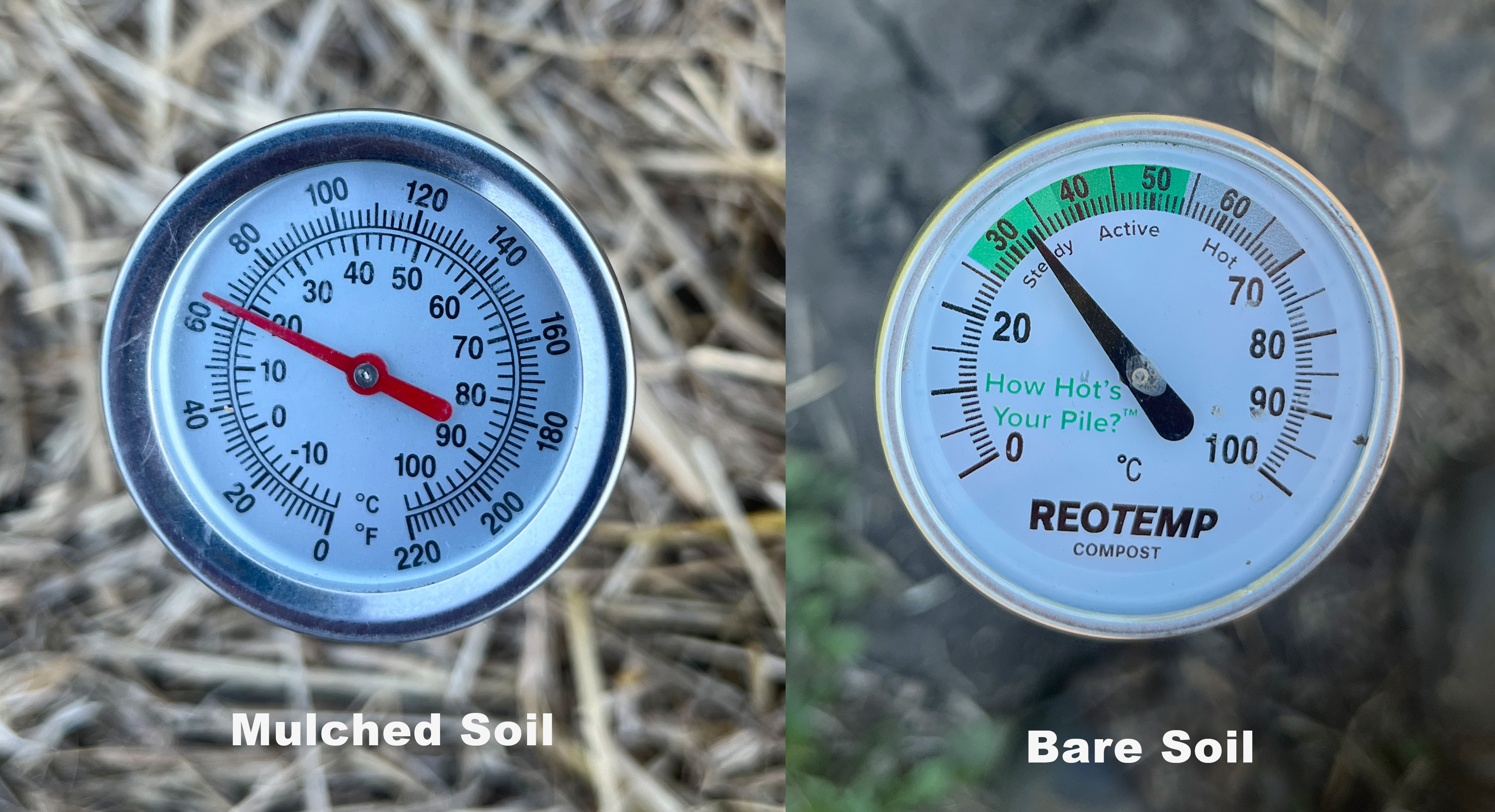
In the spring, after a very bitterly cold winter, many of us prairie gardeners are celebrating a +5C day by pulling out t-shirts and putting away the bulky jackets. In the fall, on a +5C day, we are shivering and adding layers. Our bodies become acclimated to the seasons making fall feel colder than the exact same temperature in spring to us. Most of us prefer to be moderate in temperature, not too hot and not too cold.
Our plants are exactly the same way! In the summer, the sun near solstice can spend 17 hours heating up our very black soils. At night, it can cool right off meaning the soil temperature can drop as well. If the roots of a plant get too hot, the plant is stressed and must work hard to cool itself. Similarly, if a plant is too cold, the water inside cells freezes and the ice crystals that form burst the cell walls open. Cytoplasm then oozes out of the cells making the plants look and feel mushy.
We add in insulation to our home to keep it warmer in the winter, and we put up blinds in the window to keep the sun from heating it up too much in the middle of summer. Mulch serves the same purpose! It keeps the soil cooler in the summer so the plants do not have to work as hard, and it keeps the soil warmer in the wintertime. This reduces the huge temperature swing that soil temperatures can make between a hot summer day and cool fall day. This fluctuation is not easy for a plant to adapt to and it has to work hard to overcome it. By adding mulch, we are adding insulation to our soil to prevent large temperature fluctuations.
Reduces compaction
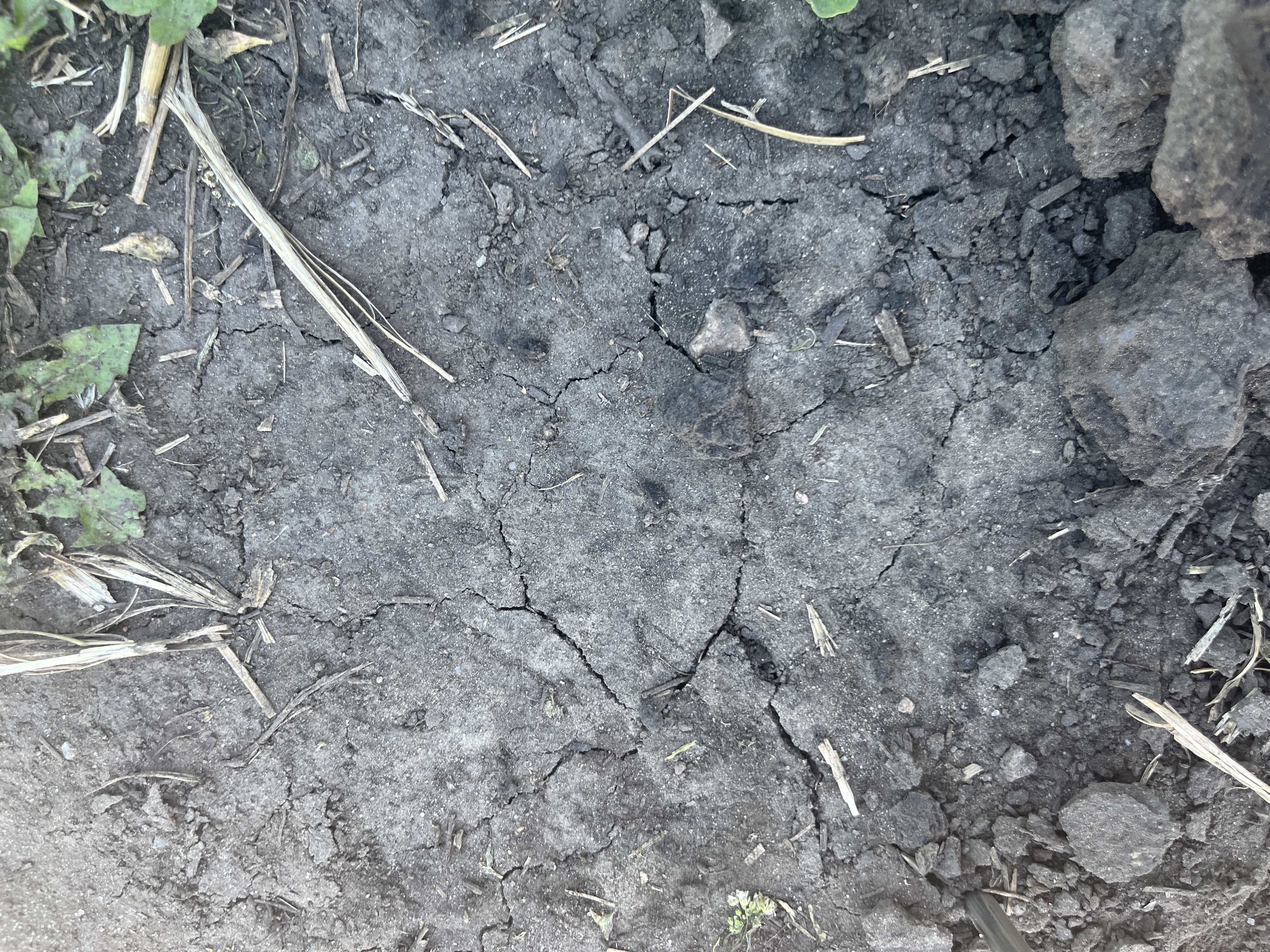
Any employee who must stand on concrete at work knows how hard that can be on the legs. Add an anti-fatigue mat and suddenly, that shift isn’t as hard on the legs. Our mulch serves our soil in a similar manner. When we add mulch to our soil and walk on it, it cushions our steps on our soil.
Right now, when you walk on your soil, especially in spring or after heavy rains, your weight can compact the soil aggregates closer together. Hard hitting rain on the soil can also break apart those aggregates and cover the surface pores into the soil. This creates a hard crust on the surface of the soil. Tilling can create a hard pan, or a plough pan which is a line of hard packed soiljust below the depth of the tines. All of these contribute together to create compacted soil. Compacted soil cannot absorb water as easily and it lacks the pore spaces needed to hold air and water in it.
Healthy soil is soft, crumbly and looks a lot like chocolate cake. Just kneeling on healthy soil can compress it into a hard lump. Adding in a layer of mulch can absorb this pressure and help reduce soil compaction.
Suppresses weed growth
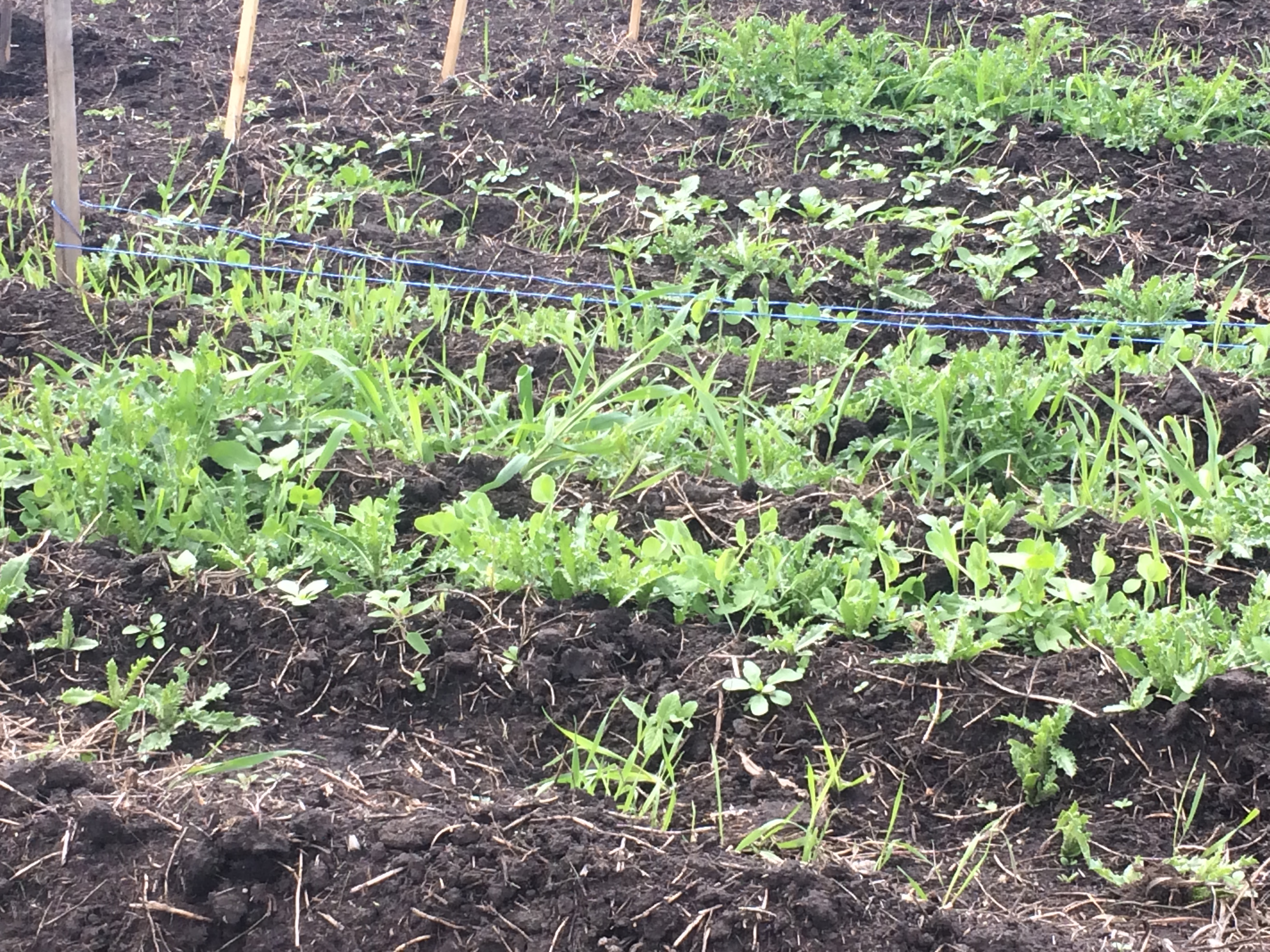
In order to germinate, most seeds need two things: light and water. If we take away either light or water, the seeds will not germinate. They will lay dormant in the soil waiting until they have both to germinate. Weed seeds can lay dormant in your soil for 2 to 50 or more years! That means if your grandma missed a weed in your garden, and your child adds light and water, she/he can grow the weed whose parent existed in the garden generations previously.
While water can percolate through mulch, light cannot. This means that mulch removes one of the two key requirements of seed germination from the equation. Mulch on the garden prevents weed seed germination!
Provides a habitat
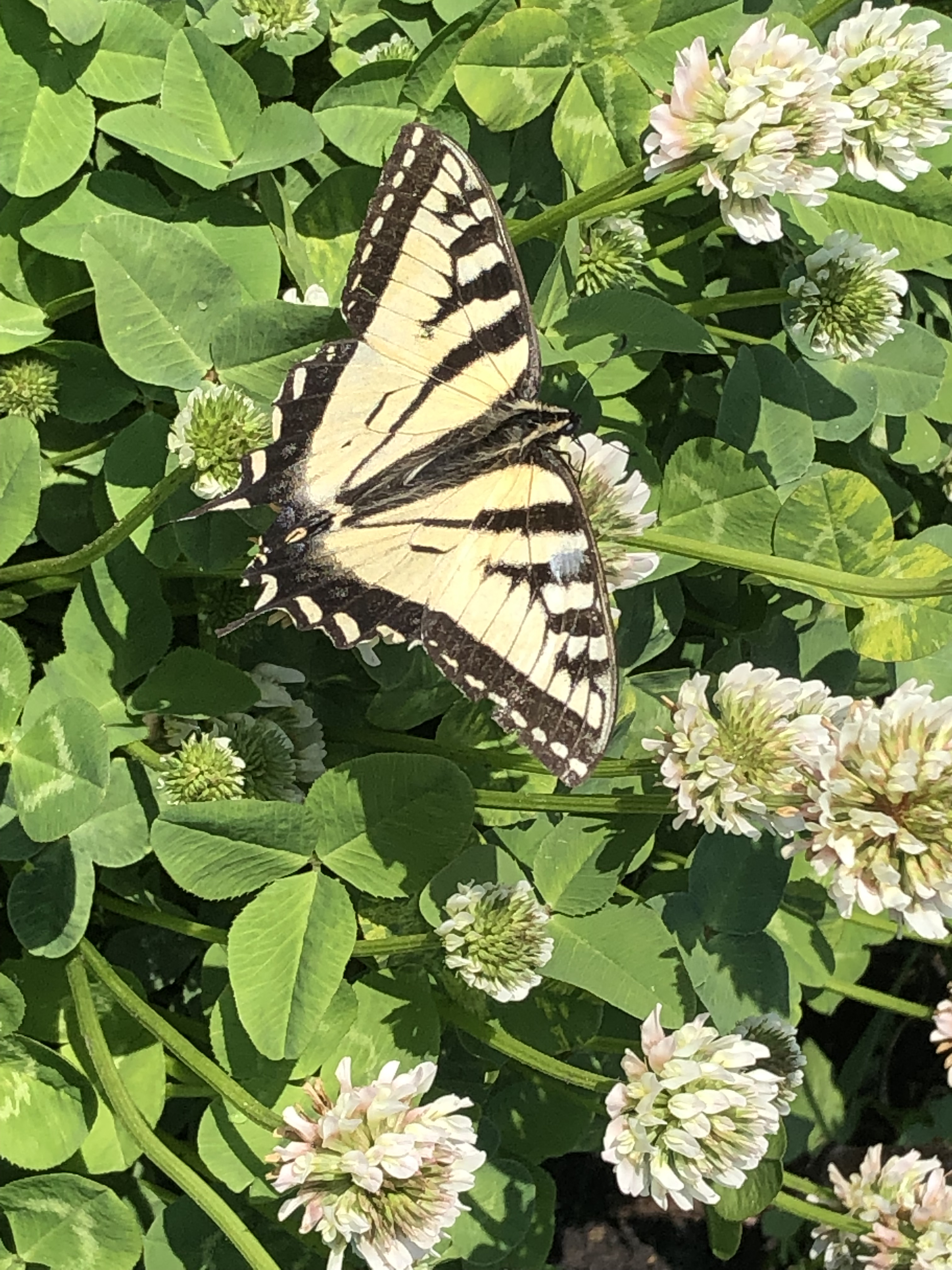
Our gardens need insects to thrive. Insects can pollinate our plants for us, but they can also prey on insects that cause harm to our garden plants. Lady bug larvae for example eat a lot of aphids in their life cycle!
Insects like ladybugs and butterflies live in the leaf litter of forests. Old leaves, grass, and dead plants combined provides their perfect habitat. If you offer these beneficial insects a habitat in your garden, they will move in and take up residence. These insects will chase down the prey insects that cause damage in your garden! Increasing insects in your garden will also play an important role further up the food chain! Birds eat insects so providing a habitat for insects will invite new species of birds to your backyard garden as well.

